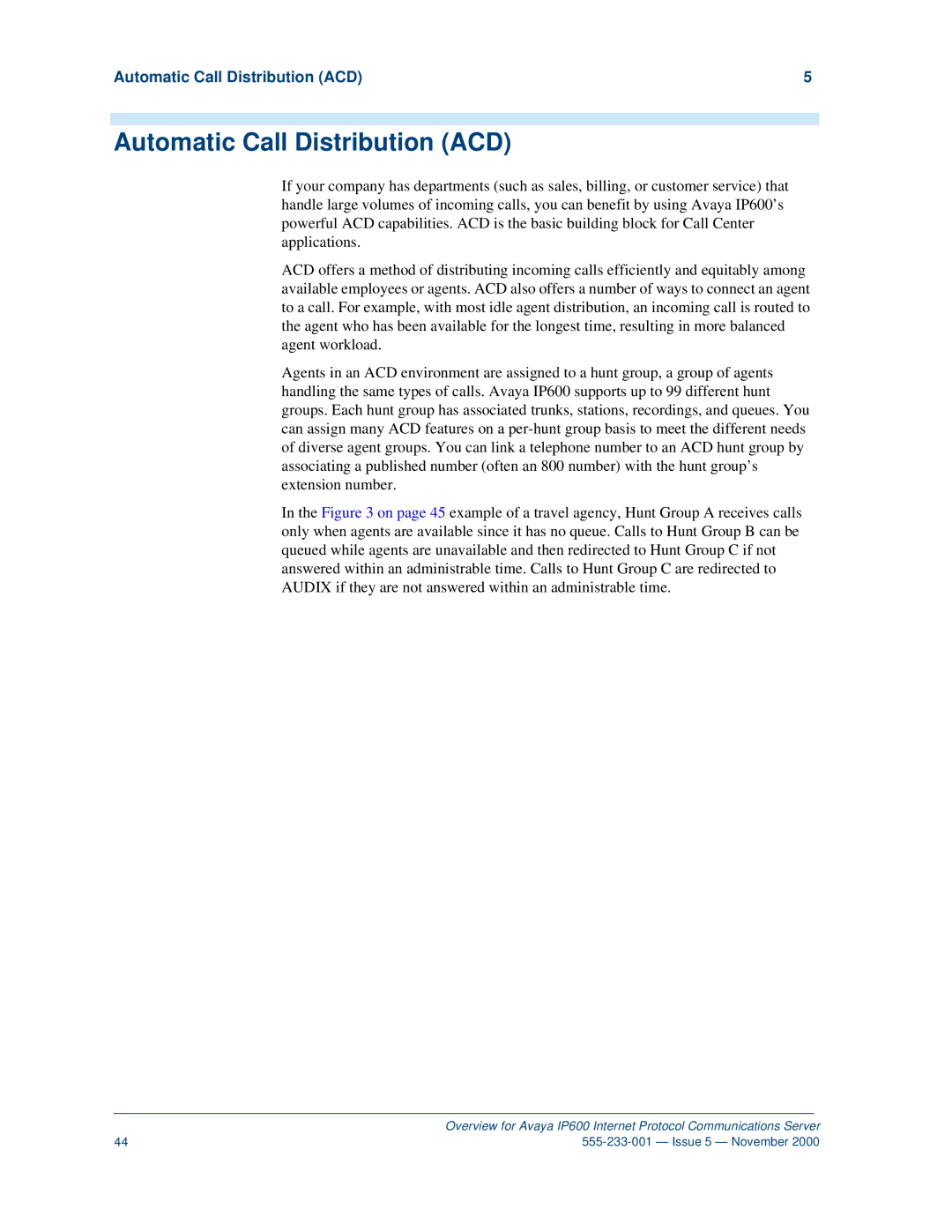
Automatic Call Distribution (ACD) | 5 |
Automatic Call Distribution (ACD)
If your company has departments (such as sales, billing, or customer service) that handle large volumes of incoming calls, you can benefit by using Avaya IP600’s powerful ACD capabilities. ACD is the basic building block for Call Center applications.
ACD offers a method of distributing incoming calls efficiently and equitably among available employees or agents. ACD also offers a number of ways to connect an agent to a call. For example, with most idle agent distribution, an incoming call is routed to the agent who has been available for the longest time, resulting in more balanced agent workload.
Agents in an ACD environment are assigned to a hunt group, a group of agents handling the same types of calls. Avaya IP600 supports up to 99 different hunt groups. Each hunt group has associated trunks, stations, recordings, and queues. You can assign many ACD features on a
In the Figure 3 on page 45 example of a travel agency, Hunt Group A receives calls only when agents are available since it has no queue. Calls to Hunt Group B can be queued while agents are unavailable and then redirected to Hunt Group C if not answered within an administrable time. Calls to Hunt Group C are redirected to AUDIX if they are not answered within an administrable time.
| Overview for Avaya IP600 Internet Protocol Communications Server |
44 |
